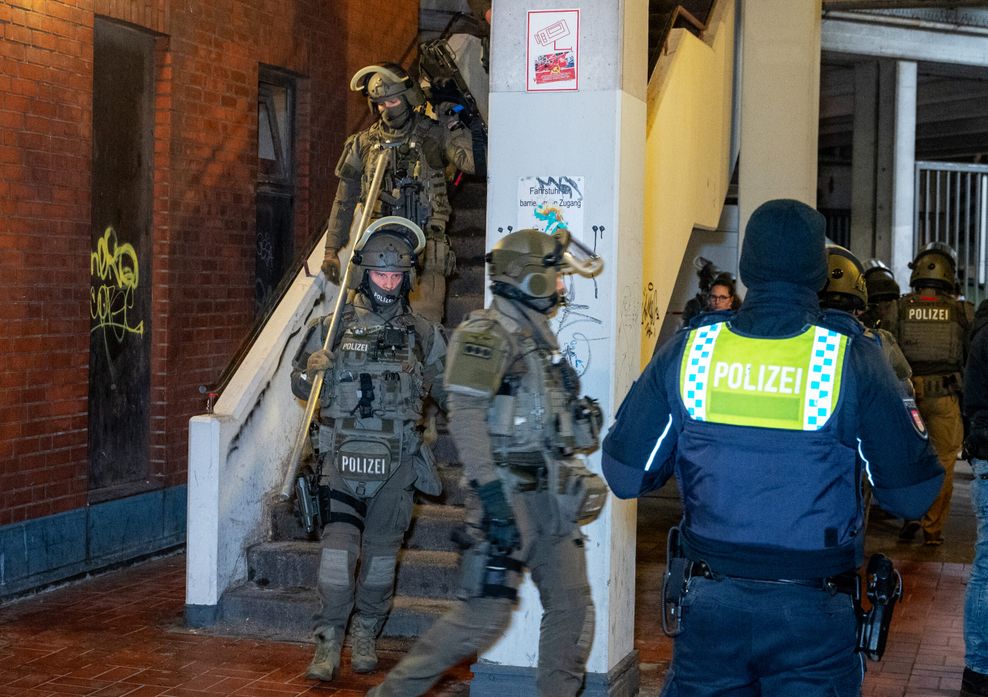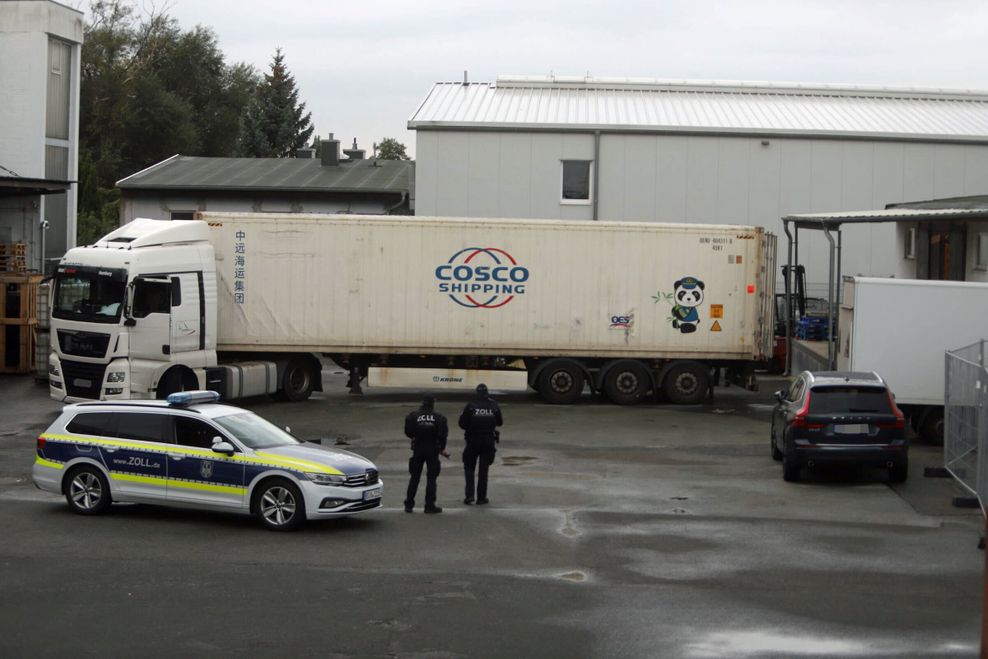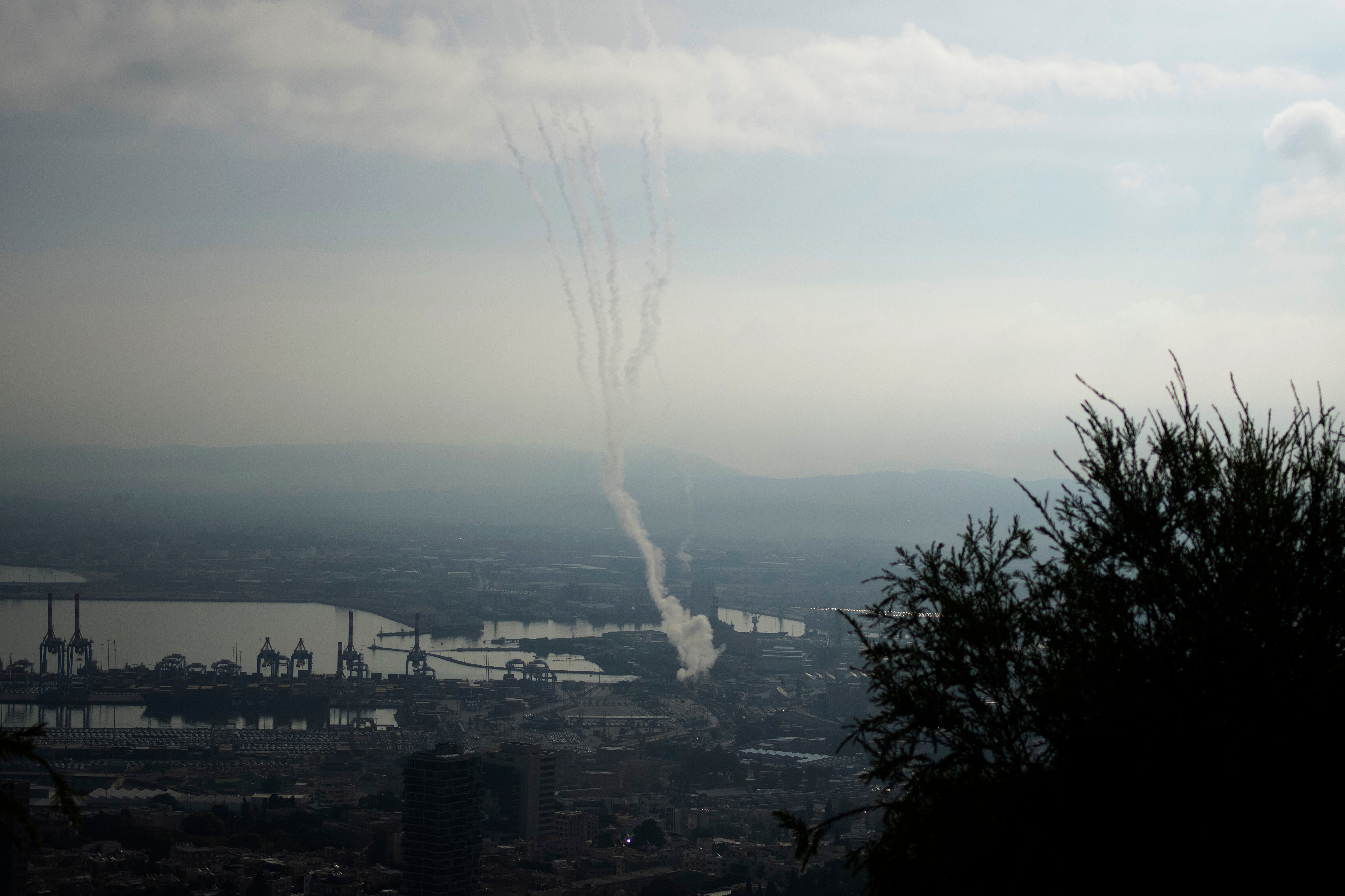The following dispatch was written by Chicago Tribune correspondent John H. Thompson a few hours before the allied invasion of Europe began on June 6, 1944, 80 years ago this year. Although not released by military censorship until “H-hour” had passed, it gives an intimate picture of the vast preparations for the attack as witnessed by a war correspondent who also witnessed the invasions of North Africa and Sicily. Thompson, who landed on Omaha Beach with American troops, received the Purple Heart, nine battle stars and was the first correspondent to receive the Medal of Freedom.
Chicago Tribune war correspondent John “Beaver” Thompson during World War II, circa May 1944. (Chicago Tribune archive)
By John Thompson, Chicago Tribune Press Service.
AT AN INVASION PORT, Somewhere in England, June 6. — Thousands of soldiers of the American army are pouring down the quaysides onto landing craft or waiting their turn as we sit here watching the beginning of the greatest invasion ever attempted.
Spread before us lie hundreds of warships, loaded transports, and landing craft of all kinds awaiting orders. Other ships attached to this force already have moved to the assembly area.
What we still can see is staggering. Yet is is only a part of one force and our force is only one phase of the entire operation. In almost every port in the United Kingdom scores of similar scenes are involving American, British, and other allied troops.
It’s beyond superlatives
To those of us who have taken part in or observed as correspondents the invasion of North Africa the campaign in Tunisia, or the invasions of Sicily, and Italy, the scope of this operation is beyond superlatives. In months of covering the allied armies’ preparations for their task on this island we have gained some knowledge of the forces to be used.
But the last few days in our loading areas and ports have demonstrated how hard the allies will hit when they throw their full weight against Hitler’s fortified shores.
This time no boys are being sent to do a man’s job. There appears to be no underestimation of the enemy’s potential. With the experience of the Mediterranean campaigns behind them, the allies are going against the Germans with our heaviest power, best weapons, and smartest tactics.
The scene along a section of Omaha Beach in June 1944, during Operation Overlord, the code name for the Allied invasion at the Normandy coast in France during World War II. The D-Day invasion that helped change the course of World War II was unprecedented in scale and audacity. (AP)
Ships loaded with vehicles
For miles back into the hinterland the roads have been lined with trucks and other mechanized equipment. But now those vehicles are safely stowed aboard ship. But if the roads are relatively empty now, their abutting areas bulge with supplies and ammunition carefully camouflaged and dispersed. Other areas contain assembly camps.
Previously we often heard combat troops speak bitterly of their fellows in the service of supply. But now the fighting men have nothing but praise for the way the static troops set up and ran these marshaling areas for the men who will lead the assault.
Those men are standing in long lines waiting to board the transports. Sometimes they laugh and joke in typical American fashion. More often the faces are stern in full knowledge of their hard task. But this time, as Maj. Paul Gale of Lynn, Mass., who had been thru the Mediterranean campaigns, said, they are better trained and equipped than any of our troops.
Carrying full equipment, American assault troops move onto a beachhead code-named Omaha Beach, on the northern coast of France, on this June 6, 1944, during the Allied invasion of the Normandy coast. (AP)
British defenses rusting
They make an incongruous sight in their camouflaged helmets and bodies bulky with equipment, against a background of rusting anti-invasion defenses which Britain hastily erected in 1940 when she feared the Germans would cross the channel.
One by one each soldier walked thru the checking tent where his name was balanced against each ships’ manifest. Then they went on to the floating docks where British and American sailors loaded them aboard.
(Among the troops on one invasion ship was Sgt. John Connors of 7714 S. Morgan St., Chicago, According to an Associated Press dispatch, he said: “I wish this tub would get going. Let’s get it over and knock their teeth out. That’s the way we feel and you can tell the folks back home that our morale was never better.”)
At a near-by port long lines of trucks, jeeps, ambulances, guns and armor moved slowly but ahead of schedule, despite a shift in the tides.
U.S. paratroopers fix their static lines for a jump before dawn over Normandy, France, on D-Day, June 6, 1944. (Army Signal Corps)
Soldiers wear new jackets
Their officers were pleased, too, with the new combat jackets the soldiers wear instead of the old web equipment and cumbersome pack. These jackets, which slip over the regulation field jackets, are buckled across the front and contain pockets which distribute the soldier’s heavy load and make it much easier to carry.
Warplanes roar overhead in constant thunder on the way to and from Europe. Hundreds of small craft dart about the harbor while along shore is the clatter of engines and winches.
And still long lines of battle-clad American soldiers come down the quaysides, loaded with explosives to blast thru any defenses which may escape our terrific air and sea bombardment.
Editor’s note: Thanks to Doug Elwell for suggesting this Vintage look back at the invasion at Normandy. Have an idea for Vintage Chicago Tribune? Share it with Ron Grossman and Marianne Mather at rgrossman@chicagotribune.com and mmather@chicagotribune.com






















